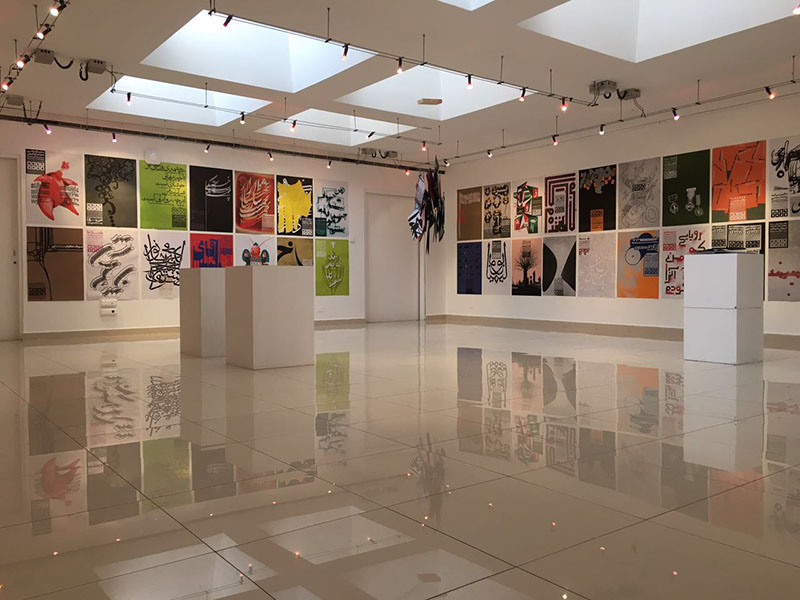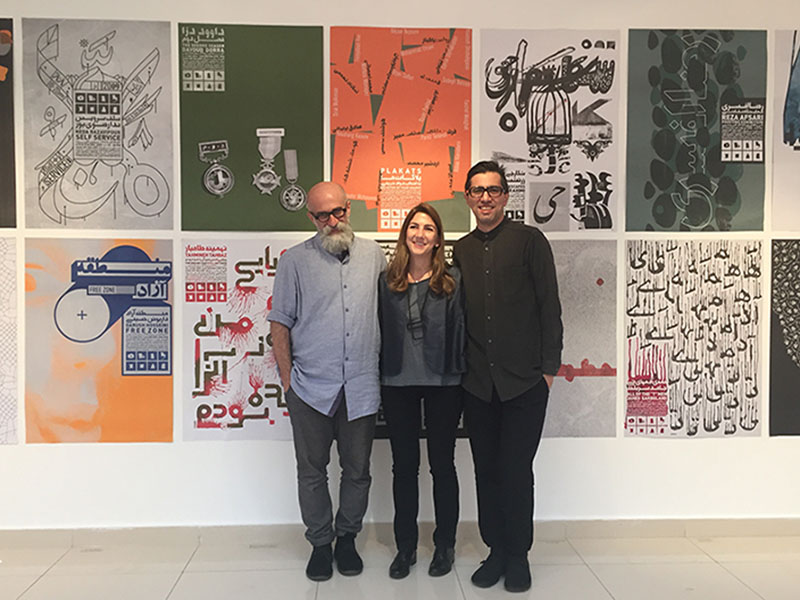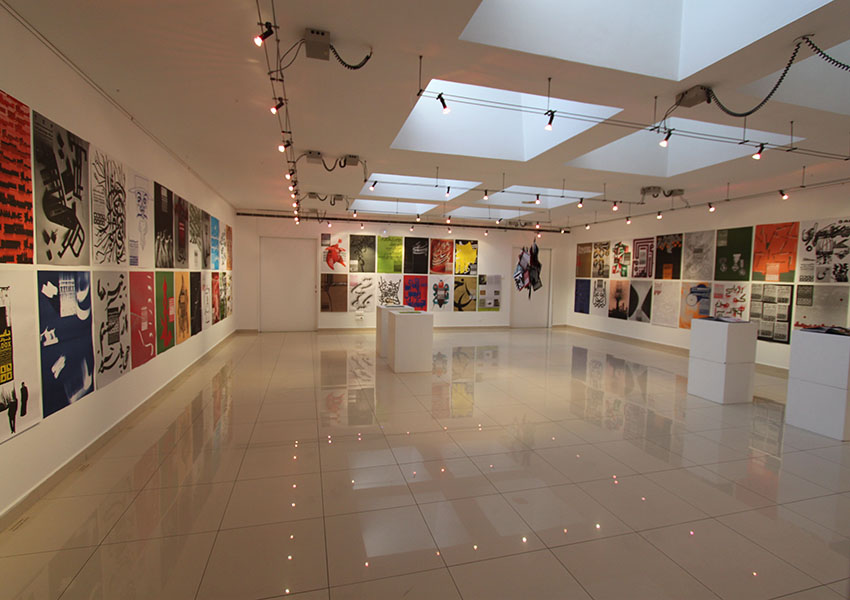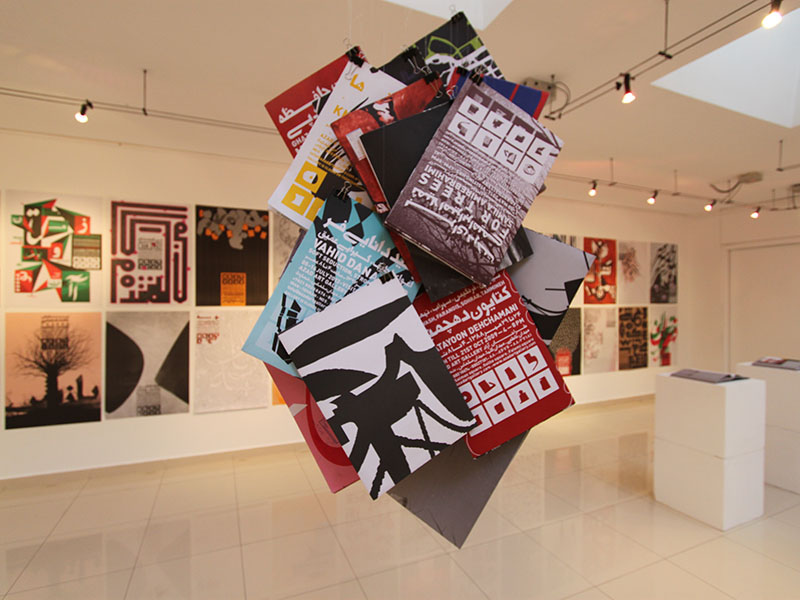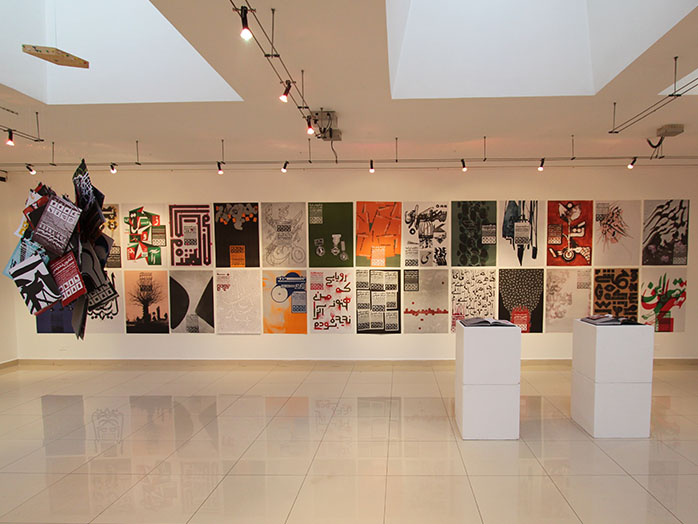What is a Poster?
“Graphic design is all about communication” Yasmine Taan, Head of the Department of Design at LAU reminded us in her introduction to the Authoritative Design exhibition earlier this month. The 100 posters by contemporary Iranian designers that covered the walls of the Sheikh Zayed Gallery provided an exceptional illustration of the visual language of design. The works are a result of a collaborative project between StudioKargah and Azad Art Gallery in Tehran, Iran.
“Typography or ‘khat’ is primary to our field,” continued Taan, “Yet, you don’t see the use of script in design in the Arab world.” Moving about the gallery one is immediately struck by the inspired use of the Farsi script. This alphabet, derived from Arabic, is a bridge between Iran and the Arab world, “This is something we share in common with Iran,” she said.
Before the exhibition opened, Aria Kasaei, co-founder of StudioKargah and art director of the project, gave a talk providing insight into the distinctive elements of this project, found in both the form and the subject of the posters. The Azad Collaborative Design Project was originally framed as a way of not only promoting the shows and exhibitions held at the Azad Art Gallery, but also a method of creating an identity for the gallery and a platform for young Iranian designers’ work. The project has produced more than 300 posters by 43 designers since it began in 2008.
Reza Abedini, the influential and renowned Iranian graphic designer known for his use of Farsi typography conceived the idea in collaboration with a group of designers and the gallery. He is currently an Assistant Professor at the School of Architecture and Design at the American University of Beirut and he initiated this exhibition along with Yasmine Taan. His idea was for a designer to create a poster for each of the bi-weekly events of the gallery that would also serve as a catalogue and invitation. Kasaei detailed the strict guidelines for the posters, which has remained consistent over the course of the project. This uniformity allowed the studio to produce a poster, invitation, catalogue and quarterly magazine from one design and printing process.
There is nothing uniform about the designs themselves however. This is of course due to the ingenuity of the designers but it is also related to the subject of the works, “This is the biggest collection of posters about art in the world,” said Abedini. Though highly successful, this unique element of the project has brought its own challenges.
Kasaei highlighted the difficulties inherent in designing posters to promote visual artwork. “The artists were confronting the project asking ‘why is someone making an image for my image?’,” he said. Many artists felt the posters misrepresented or were in competition with their own work. Overcoming this hurdle is where the role of calligraphy and typography was paramount. “We told the designers to focus on the title of the exhibition in designing the poster because illustrating came into competition with the artworks of the artist” said Kasaei. In this way designers could draw on the title and atmosphere of the exhibition and combine it with their own vision and style. In the end the project persevered because the Azad Art Gallery was an “experimental space” according to Kasaei. Despite even losing some of its artists because of the project, the gallery supported it and gave it the opportunity to flourish and evolve into the international exhibition it is today.
The posters gained their own fame over eight years, becoming collectors items and cropping up in studios, bookstores, coffee shops, libraries etc. all over Tehran. The project finally became the subject of its own exhibition at the Azad Art Gallery in 2009 and in the following years was included in the “Right-To-Left” event at the Bethanien Art Center of Berlin and “Iran, Unedited History” at the MAXXI foundation in Rome. “It was always part of the plan to hold exhibitions because we want to share the idea behind this project” said Kasaei. LAU is the fourth destination for this unique show and its presence at a university provides an extra layer to the event.
Taan highlighted the importance of giving LAU students the opportunity to see work from across the world, “As design educators, it is our responsibility to expose emerging designers to diverse cultures and enrich local designers who can reflect and express themselves using their own script in inspiring ways.” Mohammed Houltou, a senior studying graphic design at LAU was drawn to the exhibition for the quality of the artists involved as well as the subject. “It’s really amazing to see this much calligraphy and how designers are experimenting with it” he said, “to see this many posters and this much quality in one place is great.”
“Posters are rarely appreciated as art” Taan said as people mingled through the gallery pausing to contemplate the intricacies of the designs, “but this is art, and this exhibition creates a different way of seeing design for the people that came to this exhibition.”
